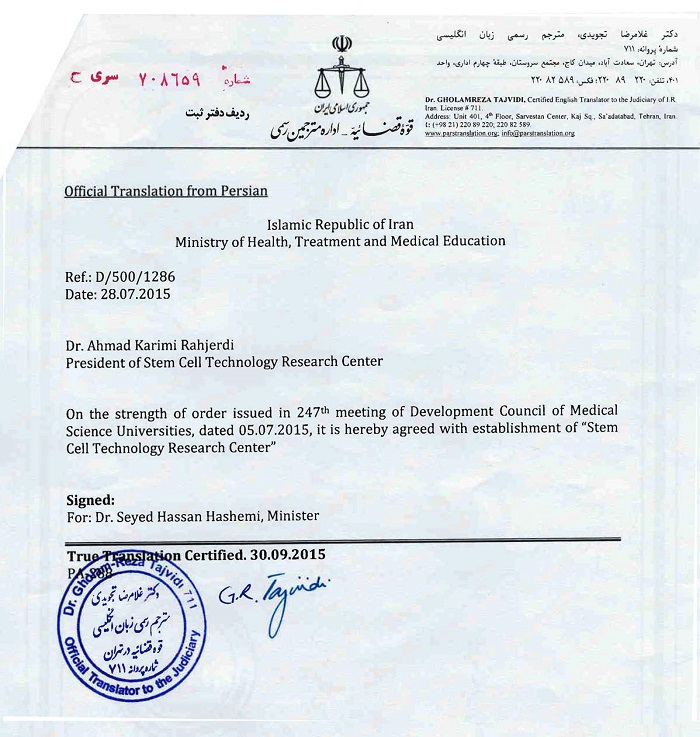The STRC as the pioneer private research centre in the field of tissue engineering and nanotechnology in Iran officially started its activities in 2004. Currently, the main activities of STRC are in the form of research plans and projects. The STRC’c long-term goals are to achieve functional products for repairing and regenerating damaged tissues. Due to the multidisciplinary nature of the field of tissue engineering, the successfulness of the relevant strategies requires the presence and close cooperation of experts from various fields of science.
Introduction of Stem Cell Technology Research Center (STRC)
To achieve this goal, the STRC recruits scientific and industrial elites from various fields including basic sciences, medicine, technology and engineering to emerge new technologies in the fields of nanotechnology and biotechnology. At present, the research projects of the STRC are carried out through interaction between the three research groups of “nanotechnology and tissue engineering”, “molecular biology and genetic engineering”, and “stem cell biology” departments.
Summary of the objectives
Today, one of the most important approaches of decision makers and planners of higher education and research system is to increase productivity and application of education and research. Integrated convergence of programs, spaces, facilities, organizations and human resources is needed for development of strategic guidelines for regenerative medicine. Research on stem cells and application, as a therapeutic approach, has developed regenerative medicine and has attracted the attention of researchers, physicians and, of course, many patients.
STRC’s Strategy Plan (STRC’s missions and vision)
Nowadays, stem cells are categorized as important scientific discovery in the field of developmental biology, which introduce them as a promising candidate for regenerative medicine. The regenerative medicine, as a comprehensive term, encompasses existing methods and research in regenerating, renovating and repairing either dead or damaged tissues. Application of embryonic stem cells, adult stem cells, and induced pluripotent stem cells (iPSCs) in regenerative medicine research, paves achievement to the ultimate goal of the mission, such as organ or cell transplantation, biomaterials, scaffolding, drug screening, disease modeling and organoid production that regenerative medicine focuses on.
Official "activity license" of Stem Cell Technology Research Center (STRC)
confirmed by the development council of the Ministry of Health and Medical Education

Organizational chart

Department of Nanotechnology and Tissue Engineering
The STRC is the first private research center in the field of nanotechnology, and the laboratories in this department are among the most equipped laboratories in nanotechnology and tissue engineering. Although the main activities of this research group are based on the design and fabrication of biomaterials with unique properties for various medical applications, the most important and pivotal task of this research group is to design and manufacture scaffolds, made by electrospinning method, for various applications in tissue engineering.
Department of Stemcell-biology
The STRC’s Stemcell-biology department is active in various fields related to cell science, especially in the field of basic and applied research stem cells. The most important research areas of this group can be the production of induced pluripotent stem cells (iPSC), engineering of bone tissues, liver, skin and many other tissues, and the effect of scaffolds on stemcell differentiation. This department is one of the leading groups in the production of iPSC in Iran.
Department of Molecular Biology and Genetic Engineering
The Department of Molecular Biology and Genetic Engineering at STRC, leads in technologies such as microRNA, gene cloning, and genomic manipulation. This department can be called as one of the most powerful genetic engineering laboratories in Iran, which has been one of the pioneers of micro RNA science and genomic engineering research. This group is also a leader in genomic engineering technologies, and the projects carried out in this section include gene manipulation processes, as well as the implementation of large-scale cloning and gene expression projects.
